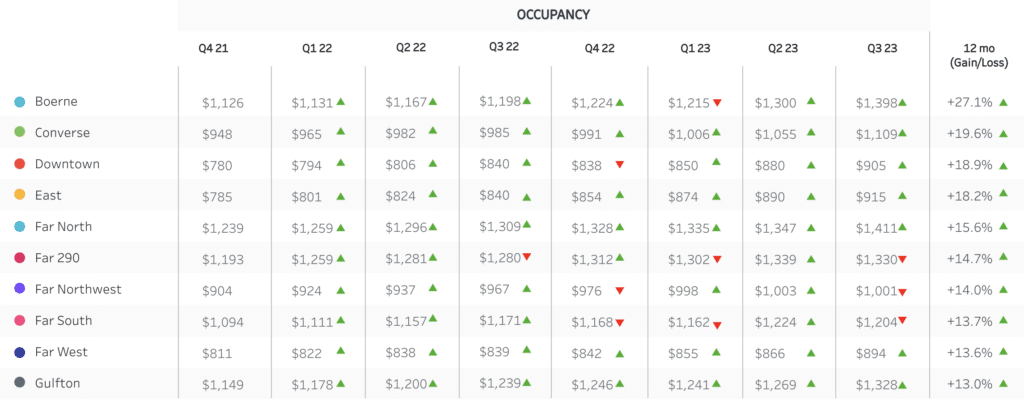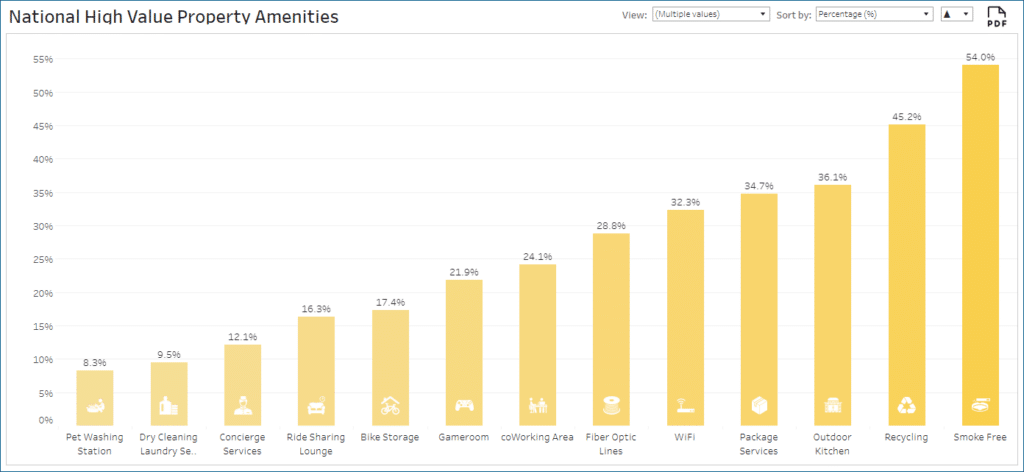5 Trends Multifamily Suppliers Should Know About

The multifamily suppliers’ industry has grown significantly in the past decade, and there are several reasons to explain this growth.
Firstly, there has been a rise in population and living standards, resulting in residents opting for new-built multifamily properties rather than older apartment communities with low-quality construction, poorer energy efficiency, and poor location. Second, the increased cost of homeownership is significantly higher than renting, with some having an average 30-year mortgage rate of 7.79%, up from 7.08% the previous year.
For these reasons, the multifamily industry has seen significant growth, with predictions for further growth in the near future. Before we discuss the current and future trends for multifamily suppliers, we will first dive into what multifamily housing is.
What is multifamily housing?
Multifamily housing simply means residential communities divided into several units. There are many variations of multifamily communities, including:
- Mixed-use buildings (mix of commercial units on ground level and residential buildings above)
- Duplexes, triplexes, and fourplexes (self-contained residences with shared outdoor spaces)
- Student housing (communities located near university campuses, targeting students with shared facilities like spas, game rooms, and fitness centers)
- Age-restricted communities (housing developments that are limited to residents aged 55 and older, usually detached houses arranged with organized activities, such as fitness classes and social clubs)
- Garden apartments (low-level apartment buildings of 1-3 floors with ground-floor apartments that may have direct access to a backyard)
- Mid-rise apartment buildings (mid-level buildings between four to ten floors with common areas and amenities such as gyms)
- High-rise apartments (high-level buildings with ten floors or more, and usually equipped with elevators)
- Skyscrapers (exceptionally tall, often iconic buildings reaching dozens of stories, primarily used for residential purposes, offering panoramic city views and often featuring high-end amenities such as rooftop decks, luxury penthouses, and concierge services)
It is also worth noting that multifamily housing is not a new concept. In the 19th century and the rise of industrialization, many workers moved to the cities, leading to multiple people living under the same roof. While these buildings were not purpose-built multifamily housing as they are today, they offered affordable, high-density housing for industrial workers, starting the multifamily housing trend.
Our next section will discuss the current trends multifamily suppliers should know about.
5 Current Trends Multifamily Vendors Need To Know
As mentioned above, the multifamily industry is growing year-on-year. Therefore, if multifamily vendors want to stay competitive within the market, it is beneficial to understand the current and predicted industry trends.
Let’s explore the most popular multifamily suppliers’ trends to look out for:
1. Increased demand for multifamily housing
While the COVID-19 pandemic negatively impacted many industries, the multifamily housing industry persevered with proven resilience, especially with millennials now dominating the rental market, increasing the demand for multifamily housing.
One reason for this increased demand is the added flexibility through lifestyle choices, such as getting married and starting families at a later age and having the flexibility to work remotely. This offers millennials more freedom to move and live in different places, making renting a more attractive option than homeownership. Furthermore, the homeownership market has skyrocketed in recent years, pricing out millennials and making it unattainable.
2. Higher property technology expectations

Like every industry, the multifamily sector benefits from modern technology, such as property technology (PropTech) and apartment data platforms. When multifamily suppliers use these software systems, they can streamline workflow efficiency.
For example, using apartment data platforms, such as SMART Apartment Data’s supplier software mobile app (compatible with Apple and Android), has significantly improved workflow because suppliers and vendors can view, search, filter, and analyze apartment data. From accessing detailed information on apartments such as rental prices in a given area to property ownership changes and management portfolios, suppliers and vendors can access data whenever and wherever needed, efficiently.

3. Higher importance on community benefits
Another lasting impact of the COVID-19 pandemic is the shift in attitude for multifamily residents. After being cooped up for two years, many renters seek meaningful connections in multifamily communities. A 2022 N.M.H.C./Kingsley Apartment Renter Preference report shows that as many as 60% of residents identify their living space to reflect their personalities.
Therefore, in the post-COVID era, the multifamily industry has seen a trend in residents prioritizing the community, its features, and amenities, such as organizing neighborhood events so residents can connect. Thriving multifamily communities emphasizing resident experience have seen greater resident satisfaction and higher rental retention rates.
4. Increased popularity for smaller cities and suburbs
Another notable change from the aftermath of the COVID-19 pandemic is the transition to working from home. This has led many renters to move away from expensive, busy city centers and instead migrate to smaller cities and suburbs.
These multifamily suburb communities have gained popularity because they tend to have more extensive living and outdoor spaces with more affordable rental rates.
Also, newer generations such as GenZ, are more environmentally conscious and want to maintain a healthier lifestyle with more exercise. Smaller cities and suburbs offer them this.
5. Growth in smart home technology
The modern world is becoming increasingly advanced with more innovative technology in our homes. Modern-day renters seek modern conveniences, such as smart thermostats, keyless entry systems, and voice-controlled assistants to enhance their living experiences.
Modern renters, particularly millennials, look for innovative technology in their homes. This is another reason renters prefer new-build multifamily communities over older apartment complexes because they are already included in the features. Studies show that there will be significant growth in multifamily properties with smart technology.
If you’re interested in staying ahead in the rapidly evolving multifamily market with in-depth insights and advanced data solutions, contact us.
How Data Supplier Platforms Can Help Multifamily Suppliers Adapt to Industry Trends and Challenges
While the demand for multifamily communities continues to grow and prosper, it also comes with challenges. Therefore, below are some common challenges multifamily suppliers should be wary of in the ever-changing market.

- Determining the state of the multifamily space in a given area: This involves comprehensively assessing various factors such as local market trends, demand for housing units, rental rates, and occupancy levels. Suppliers must also consider potential future developments that could impact the multifamily market.
- Unstable economy and social issues: If the economy is unstable, this can lead to an oversaturated market where existing residents are displaced, increasing the demand for more affordable housing. Over time, this will result in overcrowded situations and poorer living conditions.
In both these cases, it is helpful for businesses to seek out reputable apartment data Supplier software, such as SMART Apartment Data. With the Supplier software, analyzing the number of existing properties in a given area as well as the properties in the pipeline, will give one a clear picture of the multifamily space in a given market.
Furthermore, SMART Apartment Data offers its users information on occupancy levels nationwide. Users can filter by property type and determine which regions and which property types are currency facing increasing vacancies and which are not. Apartment data platforms can give suppliers and vendors a competitive edge while maximizing workflow efficiency with creative solutions.
How Multifamily Suppliers Can Maximize the Use of Apartment Data to Stay Ahead of Industry Trends
Demographic trends, economic growth, and lifestyle changes drive the multifamily industry in America. Despite the challenges and aftermath of COVID-19, the industry is still going strong with high hopes that millennials will continue to drive demand in the future.

With this in mind, multifamily suppliers and vendors should focus on providing more mobility and flexibility to meet market demands. Furthermore, the likelihood of remote work and changing work-life balance priorities is expected to shape the future of the multifamily industry. Therefore, it is worthwhile to focus on improving communities to offer superior amenities and features to support the lifestyles of future renters.

If multifamily suppliers and vendors want to stay competitive, staying current on the latest trends and forecasts is imperative. Using an effective tool, like SMART Apartment Data’s platform and mobile app, allows suppliers and vendors to view recent trends and changes.
If you want to stay competitive in the evolving multifamily market, our comprehensive data can help you understand industry trends. Contact us today to make the most of multifamily trends with SMART Apartment Data.
Explore the latest trends in multifamily data and analytics by reading our blog, or simply get started with our tailored data solutions for your business.
Ready to close more deals and exceed sales goals?
Meet with a data expert and discover how Smart connects companies like yours with industry leaders.
Related articles
Proud members of












